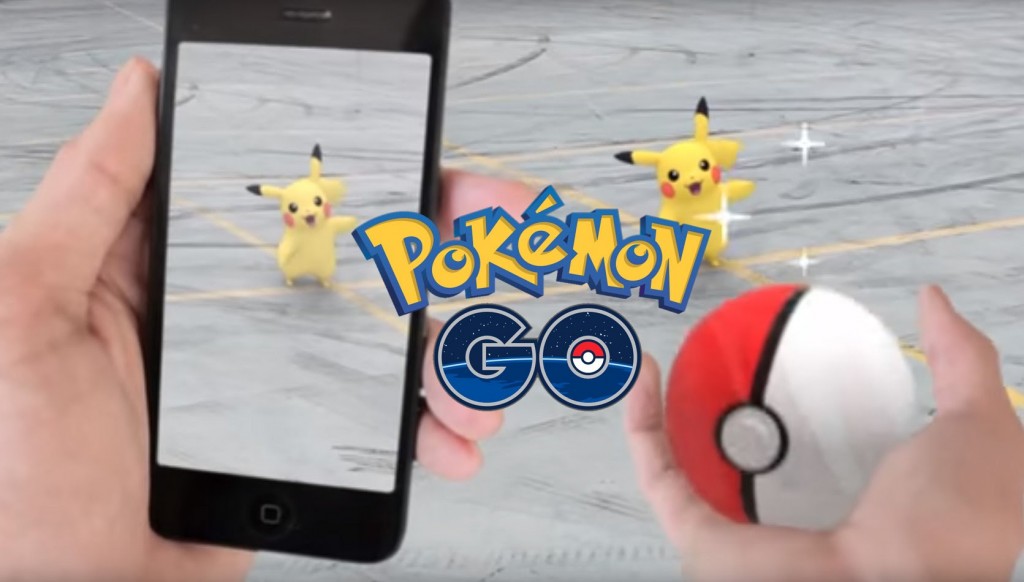 Everybody loves a craze, Pokémon has broken new ground by threatening to become a bigger craze second time around than it was first time around, unbelievably 20 years ago.
Everybody loves a craze, Pokémon has broken new ground by threatening to become a bigger craze second time around than it was first time around, unbelievably 20 years ago.
The essence of the new game craze or fad (call it what you will) is a location-based augmented reality game. For those grown-ups amongst you let me explain. You download the application (which is free) onto your mobile phone. You then go out into the street and look for Pokémon, you can attract them using lures and, If you use a virtual reality mode, you can actually see them (through the screen of your phone) on the street or in the building where you are. When you find one you capture it by flicking something called a PokéBall at it. You then own it. There are lots of different Pokémon, apparently listed in something called the Pokédex, the objective is to catch them all.
So, which type of nerd are you? If you’re thinking WOW that’s amazing I’ve got to play! Please visit the app store of your choice and download the game, you need read no further.
If, on the other hand you are thinking WOW how on earth did they do that? Then this article is for you.
Let’s start with the first line of the description, “location-based”, basically your mobile phone knows where you are. Most probably by using the global positioning system (GPS) using a constellation of satellites orbiting the earth, whose accuracy is refined by taking into account Einsteinian equations that allow for the fact that time and space are not constant but may in fact be warped, curved or, when used by accountants or bankers completely bent.
Layered on top of the fact that the phone knows where you are is an overlay of incredibly sophisticated map building pioneered by Google, so that your position is not simply rendered as a set of coordinates but more precisely defined as on a certain street, on a certain corner, across the road from the chip shop and round the corner from your favourite pub.
So let’s consider you are playing your game of Pokémon Go, on a particular, street corner and the app or game, knowing where you are will feedback to the phone, instructions that tell it to display an imaginary Pokémon (because trust me, they are not real) standing at a nearby bus stop. Other gamers, in the same vicinity, will be fed the same information, so remarkably they will see the same thing as you – even though none of you are actually seeing anything.
The game is sophisticated enough to respond to gaming activity on the streets, so the more people play in a particular area the more Pokémon may appear or disappear. The integration of known locations is also sophisticated, with Pokémon being found places of public interest, parks, harbours or beaches. The types of Pokémon being dependent on location for example near water in muddy fields or in sports stadiums – incidentally we haven’t even contemplated Pokémon Gyms and Eggs, but they exist too (or don’t exist depending on which world you’re in).
So this is a game where gamers have to go out into the real world (which has to be applauded) to gain an experience in a virtual world, which is actually the real world, but augmented by imaginary characters. Gamers are brought back to the real world quickly when they realise they can buy with real-world money, coins to help them complete the game more quickly, but taken back to something of a non-real-world when they read reports that gamers are selling successful accounts for large sums of money!
Leaving aside any cynicism about the blurring of real and virtual worlds that sometimes give gaming a bad name. Let us step back for a moment and applaud the fact that such a variety of technologies, have been brought together so seamlessly to create something so popular. It is surely the convergence of technologies that were originally conceived to allowed person-to-person voice communication at a distance and a satellite-based global positioning system (originally built for military purposes) that is so remarkable. Leaving aside for a moment the technologies that were involved in developing the launch vehicles for said satellites and moving forward into a world of interconnectivity where a worldwide web of cellular interconnectivity allowed a multinational giant to even considering mapping the world. We must surely marvel that somebody realised a brilliant way to combine all of these things, would be to resurrect some 20-year-old imaginary fur balls and let them loose on the world. I can’t believe that some point during the “pitch” somebody must’ve said…you’re joking right?
Technological innovations don’t always break new ground by themselves. Sometimes the magic happens when known or established technologies are brought together in an interesting or innovative way. It’s not always necessary to invent something completely new, sometimes you can innovate by finding a new way of doing things.
The mundane task of sharing files for example, usually done by email, but sometimes people require a more secure way with perhaps more functionality, version control, away to revisit old files, way to control issue histories and who has access to them.
Collabor8online lets you share files online in a new and innovative way for more information call 020 3369 6491 or Click
.



